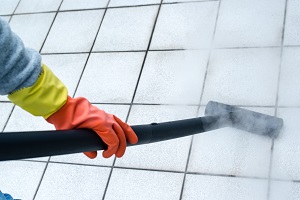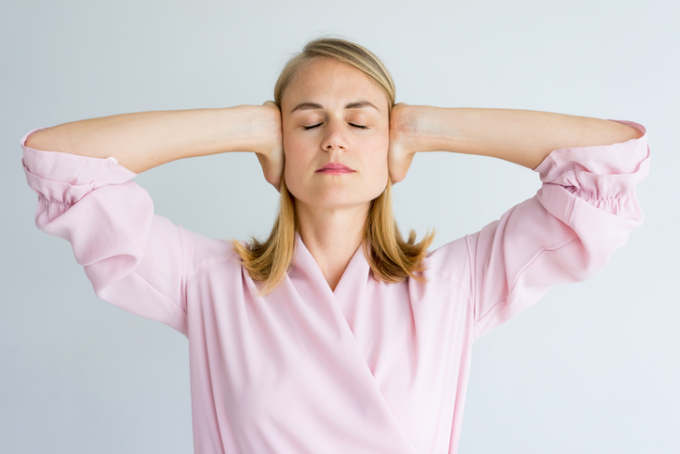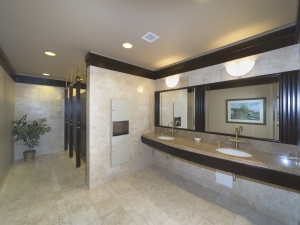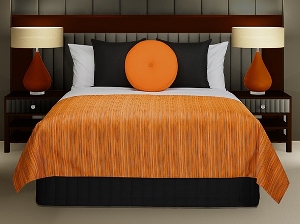
Modern steam cleaning both efficient and versatile
Strange as it might seem in this digital age of disruptive new innovations, the ‘old’ technology of steam still deserves a place in the cleaning toolkit available to hotel and resort managers today.
For more than 150 years, engineers have been using steam to remove grease and oil from machinery. Recent years have seen major advances across an expanding range of floor cleaning equipment. These developments may have diverted attention away from the benefits of steam cleaning in some quarters, but unjustifiably so.
The fact is that modern steam cleaners have also benefitted from technical advances. These have the effect of conserving water and energy, while also enhancing reliability and efficiency. Combined with the long-proven, deep cleaning power of steam, it means modern ‘dry’ steam cleaning machines offer a highly cost-effective and versatile option for the hospitality sector – and one that is also user-friendly and kinder to the environment. As a result, steam cleaning is undergoing a resurgence as an ecological cleaning method.
What is ‘dry’ steam?
Using relatively small amounts of cold, clean tap water, the modern steam cleaner creates a low-moisture vapour in its internal boiler. The vapour particles of this fine mist are smaller, and therefore drier than those of steam. This vapour, as low as five per cent water, carries heat to the surface to be treated. Combined with light agitation, steam cleaning can thus produce high standards of cleanliness without the need for chemicals.
Superheated (at temperatures up to 180°C) dry steam not only dissolves grease and grime, it sanitises surfaces; in contrast with mopping, which tends to spread bacteria and leave the floor wet, with the risk of slips and falls. At these temperatures, the residual moisture left after steam cleaning rapidly evaporates.
The versatility factor looms large in importance in hotels, motels and resorts. Steam cleaners can tackle both indoor and outdoor applications, cleaning small cracks and driving dirt from crevices that other machines cannot reach. That includes cleaning chores such as tiling grout in the lobby or pool.
With the right attachments, steam cleaning also comes into its own in the guest rooms and lounge. Soft materials such as blinds and upholstery can be cleaned in situ, as well as mattresses and carpets. Regular steam cleaning helps maintain their ‘as new’ appearance, as well as removing stains and banishing smells by killing odour-causing bacteria, and dust mites, in an instant. (This holds true for food and drink spills, vomit and urine.)
So ‘dry’ steam cleaning leaves materials and surfaces clean and odour-free with minimal water residue. Mould, bacteria, mildew and any chemical contaminants left behind by other cleaning methods are also removed. As the heat kills spores, mould and mildew won’t return for some time.
Steam cleaning achieves this without changing the original colours or texture, or leaving exotic residues or stains on surfaces. Often after normal cleaning a chemical residue leaves glass and mirrors smeared, and this attracts dust and dirt. Dry steam cleaning leaves glass and mirrors streak-free. Bathtub bottoms and shower floors are well suited to steam cleaning too.
Most traditional cleaning methods are based on the use of water and detergents, which ensure the surface smells fresh and clean. However, bacteria left behind may accumulate rapidly under the still slightly moist surface. The deep cleaning effect of steam ensures that bacteria and other micro-organisms are destroyed, even in the pores of the contaminated surface. Any minimal residue left behind can be removed by the simultaneous use of microfibre or vacuuming. Hence the use of steam cleaning in hospitals to combat bacterial infections such as MRSA.
Tricky tasks tackled
This sanitizing capability opens up other tricky tasks that are critical to the smooth and safe running of guest accommodation, especially hotels. Food preparation areas, including stainless steel worktops, grills, ovens and even fridges and freezers can be cleaned and sanitized in one step. This can save significant amounts of staff time. Again, with attachments such as a hand-mop kit, the same machine can be used to steam clean walls and ceilings as well as floors and work surfaces.
Reducing reliance on chemicals is worth doing for many reasons, and it burnishes the environmental credentials of businesses, which is increasingly important to consumers and business clients.
Steam cleaning machines that use accredited water-saving technology are also a responsible choice in countries which recognize the need to husband this precious resource. Compared with pressure washing, a low-pressure steam cleaner cuts water use by 80 per cent. (This water-saving efficiency has secured some machines accreditation on the Smart Approved Watermark list, making buyers eligible for rebates with their local councils and water authorities)
So that combination, of limiting water consumption and potentially eliminating chemicals, makes steam cleaning a sound choice, both ethically and in economic terms.
Choosing the right equipment
Hotel and resort managers – or their contract cleaners – also need to take into account other factors when deciding what role steam might play in the annual programme of daily, interim maintenance and deep cleaning. There are many equipment options – from multipurpose machines and hand-held steam cleaners to steam mops and floor scrubbers.
The selection criteria apply also to other cleaning methods.
The main questions are:
• What use(s) will the machine or equipment be put to? As outlined here, steam machines can tackle a wide range of surfaces and materials, but some models may be better suited than others, for example, for kitchens, bathrooms / washrooms, or spot cleaning upholstery and carpets.
• Are there applications that will require use of chemicals as well as steam? As opposed to a steam-only cleaner, some units are designed to use chemical detergents as well, mainly to accelerate cleaning, and others are also equipped with a vacuum function. The vacuum pump sucks water back into a recovery tank, where chlorine tablets boost anti-bacterial performance – in food preparation areas, for example, where the use of cleaning solvents is restricted. The vacuum facility is also ideal for collecting excess water from flooded floors or carpets.
• How long will the machine be used for? If this is likely to mean more than an hour and a half of operation, a continuous-fill boiler will be more efficient. Models are designed to steam clean for up to a certain number of hours per day, and longer periods require a higher pressure capacity, which increases the size of the machine.
• Will the machine have to be moved long distances, between buildings, or maneuvered into tight spaces? The weight of the most popular steam cleaning machines ranges from 12 kilograms through to 40 kilograms. Some units are very compact, but even a larger machine designed for large hotels and big commercial kitchens can have a narrow body that will allow access to confined areas.
Another advantage of the latest, well-designed steam cleaners is that they are comparatively easy to operate. Minimal training is required before staff can put a steam cleaning machine through its paces.
Labour costs are an important factor for the building manager and cleaning contractor when specifying cleaning methods and equipment. Ease of operation, the simplicity of the process, and machine versatility can give steam cleaning the edge here, and boost overall cost-effectiveness.
Many businesses in the hospitality sector have already embraced the new steam age. But faced with a range of viable solutions that exploit different technologies in various configurations, it is advisable to commission a site survey and ask for a demonstration on the premises before steaming ahead.

AccomNews is not affiliated with any government agency, body or political party. We are an independently owned, family-operated magazine.







